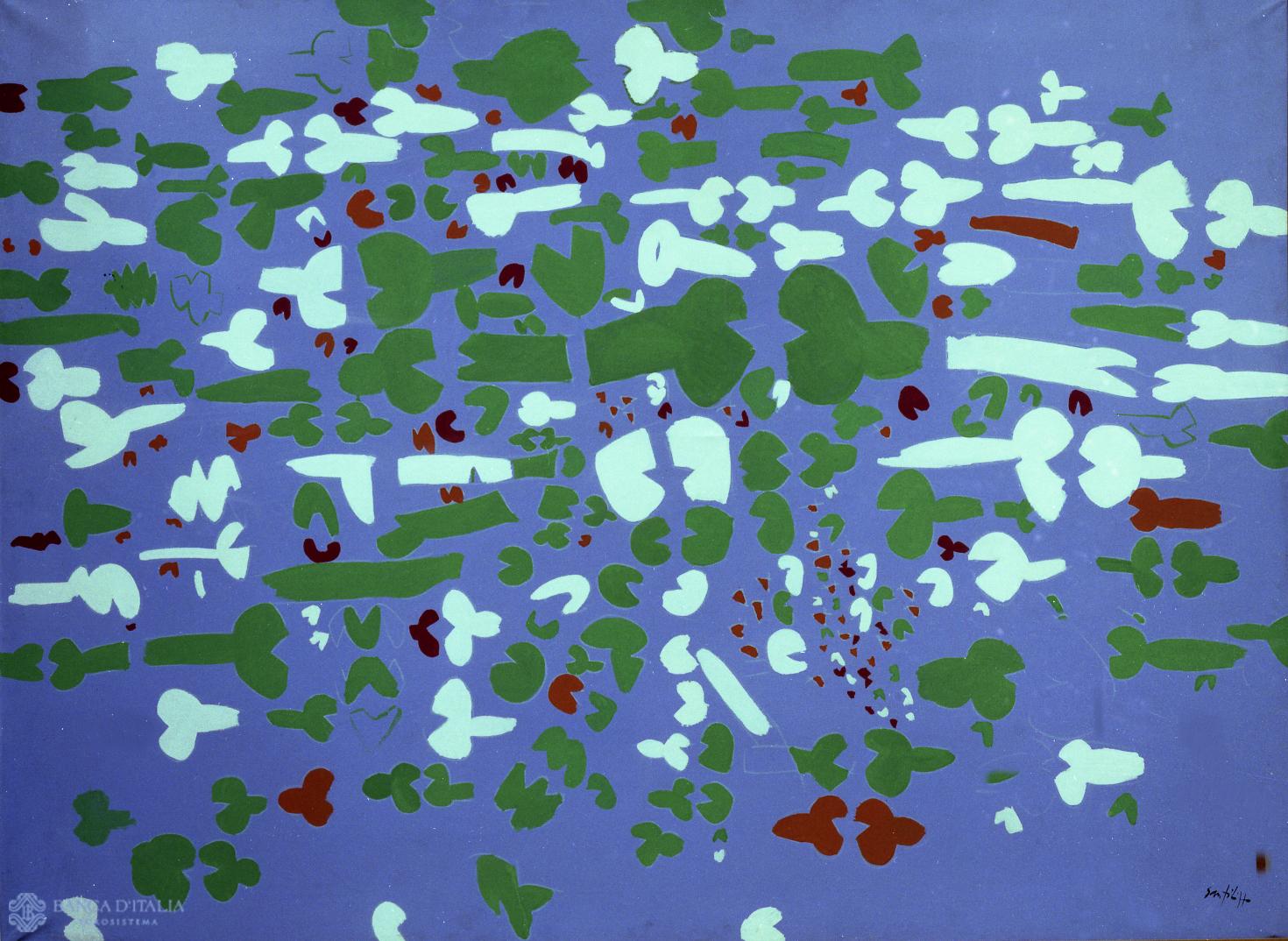Antonio Sanfilippo was born in Partanna in 1923. He studied first in Palermo, together with Pietro Consagra, and later in Florence’s Academy of Fine Arts. He met his future wife, Carla Accardi, and Guttuso, with whom he exhibited in Palermo, which was also the site of his first solo exhibition in 1945. The following year he moved to Rome, where he attended Guttuso’s studio and from where he set off on the canonical study tour of Paris. In 1947 he was one of the signatories of the manifesto of the Forma Nuova group, with Dorazio, Perilli, Accardi, Consagra, and others – exhibiting with them at the shows organized by the Art Club in Italy. Soon, however, he moved away from his early post-Cubist work, adopting a style of painting that was initially neo-Concrete, then - from 1953 onwards – characterized by an original inquiry into the sign, which he believed should be simple, not mimicking any naturalistic fact but enlivened by colour.
Accused of decorative intentions by the most retrograde critics, his work was instead unreservedly admired by Marchiori, Vivaldi, Ponente, Tapié and many others; he exhibited regularly at the Venice Biennale (where in 1966 he held a major solo exhibition), the Quadriennale in Rome, throughout all of Italy and not infrequently abroad (in New York, Pittsburgh, Chicago, Boston, London, Brussels and Osaka, amongst others). In many ways, then, Sanfilippo had comparable experiences to those of his avant-garde companions, with alternate success and incomprehension. What made him unique remains what Marchiori and Dorazio instinctively sensed as his obdurate poetic will, even before his linguistic one, and a lifelong artistic quest shaped by beauty.
At the end of a harsh last decade, in which both the joyous abandon and frequency of his output declined, Sanfilippo died in Rome in 1980.
Antonio Sanfilippo
Antonio Sanfilippo (Partanna 1923 - Rome 1980)
20th century AD


